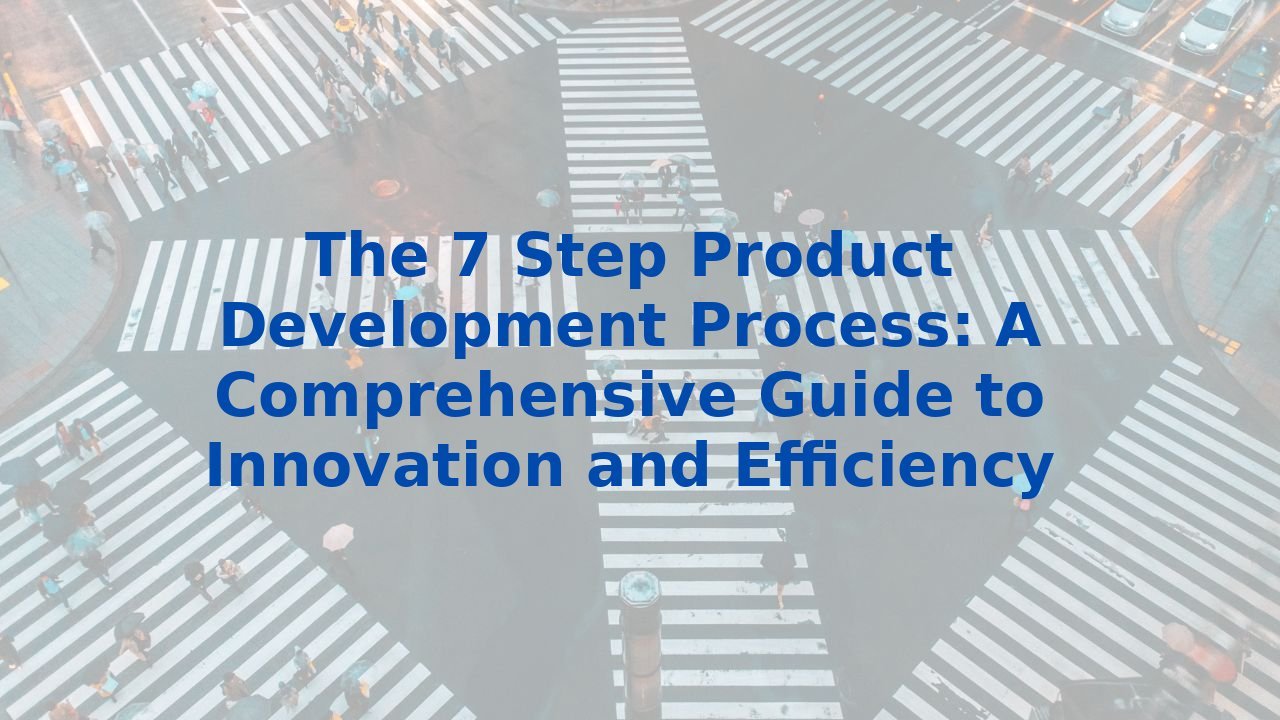The 7 Step Product Development Process: A Comprehensive Guide to Innovation and Efficiency
Introducing: The 7 Step Product Development Process!
Are you looking to streamline your product development journey? Whether you’re launching a new product or enhancing an existing one, understanding a structured process is crucial. Our comprehensive guide on “The 7 Step Product Development Process” is here to help. Let's delve into these steps and explore how integrating Artificial Intelligence (AI) can elevate this process, driving efficiency and innovation.
The 7 Steps Explained
Step 1: Idea Generation
Every successful product development journey starts with a brilliant idea. This can stem from brainstorming sessions or customer feedback. Here, AI can significantly enhance the process by identifying market trends and analyzing data from various sources. By utilizing AI algorithms, businesses can capture consumer preferences, predicting which ideas might resonate with the target audience.
Step 2: Idea Screening
Once ideas are generated, they must be screened for viability. This step involves critical evaluation to filter out concepts that may not align with business goals or market needs. AI tools can analyze historical product performance and competitor insights, providing data-driven recommendations that help teams make informed decisions. This minimizes risks and ensures that only the most promising ideas progress.
Step 3: Concept Development and Testing
Transforming an idea into a concept allows teams to flesh out the details. Concept testing ensures that initial reactions are gathered before full development. Here, AI can assist in conducting surveys and interpreting results, rapidly processing feedback to refine the concept. Advanced analytics can also simulate potential market responses based on various scenarios, guiding teams in optimizing their approaches.
Step 4: Market Strategy Development
A solid market strategy is essential for product success. This step involves defining the product’s positioning, pricing, and promotional strategies. AI can analyze a wealth of market insights to identify potential consumer segments, enhancing targeting precision. With AI, businesses can monitor competitive pricing and adjust strategies in real-time, ensuring they remain relevant in a dynamic market.
Step 5: Product Development
This stage is where the actual product design and development take place. Iterative testing and prototyping are key components. By using AI in this phase, organizations can accelerate design cycles through predictive modeling and automated testing processes. These technologies enable teams to identify potential software or design flaws early, reducing overall development time and costs.
Step 6: Market Testing
Before a full-scale launch, market testing is critical. This involves releasing the product to a limited audience to gauge feedback. AI-driven analytics tools can continually monitor user interactions, providing real-time insights into customer experience and engagement. By leveraging these insights, teams can quickly address issues or capitalize on elements that users particularly enjoy.
Step 7: Commercialization
Finally, the product is ready for launch. This is where all previous efforts culminate into a full-scale market entry. AI can support this phase through automated marketing campaigns and sales forecasts, ensuring that marketing strategies are executed effectively and the product reaches interested consumers swiftly. Post-launch, AI continues to play a role in monitoring sales performance and customer feedback, facilitating ongoing improvements.
The Transformative Power of AI
Throughout this product development journey, the role of AI becomes increasingly clear. By integrating AI into each step of the process, organizations can enhance decision-making, uncover valuable insights, and streamline operations. The automation and analytical capabilities afforded by AI not only improve productivity but also foster a culture of innovation. This shift allows teams to focus more on creativity and strategy, rather than getting bogged down by repetitive tasks.
Empowering Your Workforce
Despite the advantages of AI, it's crucial to recognize that the successful implementation of these technologies hinges on skilled employees. The dynamics of product development can evolve and become more complex, requiring teams not only to embrace AI tools but to understand them thoroughly. By investing in AI training programs, organizations can equip their staff with the necessary skills to leverage AI effectively. This proactive approach ensures that your workforce remains competitive and capable of adapting to future industry shifts.
Conclusion
Implementing “The 7 Step Product Development Process” is more than a pathway to launching successful products; it's a strategic investment in your organization's future. By utilizing AI at every step, businesses can enhance efficiency, make informed decisions, and foster a culture of innovation. Empowering your employees through comprehensive AI training further solidifies this journey, turning potential into performance. Embrace this evolution, and watch your product development soar to new heights.



